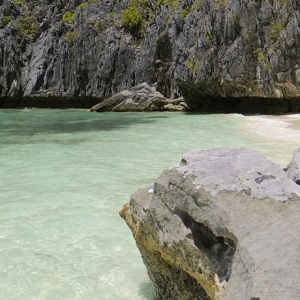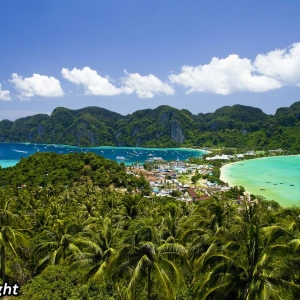Even anti–beaten path travelers like myself are seduced by the idea of wandering among the iconic Incan ruins of Machu Picchu. But getting there isn’t cheap, and it involves some trickier-than-expected logistics. I finally ticked Machu Picchu off my bucket list last fall, and picked up some tips along the way. Here’s how to visit this famous spot.
When to Go
Machu Picchu is open year-round, but there are two things you can’t count on: dry weather and thin crowds. It can rain anytime, though officially, October to April is the rainy season. And while peak season is July–August, you should always expect crowds.
Strategy
Unless you’re hiking the Inca Trail, you’ll likely fly into Cusco and ride the train to Machu Picchu. You can do it in one day: take the 3.5-hour train ride from Cusco to Aguas Calientes (the town at the foot of Machu Picchu, now officially called Machu Picchu Pueblo), spend the afternoon at the ruins, and come back that night. But I think you’ll regret it if you rush through.
Here’s what I suggest instead: when you land in Cusco, take the train straight to Aguas Calientes and spend one or two nights there, leaving a full day open to explore Machu Picchu. Then return to Cusco for another couple nights.
Why skip Cusco at the start? The city sits at 11,000 feet, which can cause altitude sickness, especially if you’re flying in from sea level. I had heard this advice but didn’t heed it, and regretted my decision. Altitude can do strange things: even though I’ve been to 14,000 feet and felt fine, I got very sick after just six hours in Cusco. Aguas Calientes, however, is only 8,000 feet, so it’s a better place to acclimate. I felt much better when I got there and was fine when I returned to Cusco.
Getting There
Hiking the Inca Trail is a strenuous affair that takes several days, which I unfortunately didn’t have. One word of caution, if you decide to hike: you’ll read that one highlight is walking through Machu Picchu’s Sun Gate at sunrise. It makes for good marketing, but be warned that the citadel is often foggy in the morning, ruining any kind of spiritual experience.
If you’re taking the train, as I did, PeruRail runs the show. The 3.5-hour trip from Cusco to Aguas Calientes is a pretty one, right along the Urubamba River with canyon walls on either side. Some train tips:
• The Cusco train station is actually in the nearby town of Poroy. It’s a cheap taxi ride, but give yourself at least 20 minutes to get out there from your Cusco hotel.
• You’ll have to choose between different trains (at different price points): the Expedition, Vistadome, and the Hiram Bingham. I rode the first two. While some seats on the Expedition are right next to a window, mine abutted the window divider—not good for checking out the scenery. The Vistadome was a bit more comfortable (and a bit more expensive), and every seat had a full-on window view. Still, I’m not sure it matters much which one you book: the best views are from the train doors between cars. The Hiram Bingham is the luxury option that’s run by Orient-Express. It’s a gorgeous train that serves a tablecloth meal with wine. It’s also much more expensive.
• Book as far in advance as possible on the PeruRail site. I can’t emphasize “far in advance” enough. Tickets sell out weeks ahead in some months.
• If tickets from Cusco are sold out, all is not lost. Try to buy one that departs from the town of Ollantaytambo in the Sacred Valley—or that stops there on the way back. Then it’s easy to catch a taxi or minivan to/from Cusco. I got off here on my return and wish I had time to linger—it’s a quaint town surrounded by gorgeous countryside and Incan ruins. If you do stay, the Aranwa hotel comes highly recommended.
Where to Stay
• Hands-down, the best place to stay in Aguas Calientes is the Inkaterra Machu Picchu Pueblo Hotel, where I spent two nights. It’s a sprawling resort set on the edge of town, away from the crowds and abutting the forest. Actually, this Inkaterra hotel feels like it’s in the forest: narrow stone paths cut through thick greenery, leading you past colorful birds and up to white adobe casitas covered by thatched roofs. The spacious rooms feel very local and come with fireplaces to warm up the Andean highland evenings. Public spaces include cozy alcoves and a warm ambience that extends to the staff. The price includes a full breakfast buffet and excellent dinners, as well as a choice of several excursions with the resort’s naturalists.
• For something more affordable, check out El MaPi, also an Inkaterra property with a casual vibe in “downtown” Aguas Calientes.
• You could also spend the night at the Machu Picchu gates. The appeal is obvious: to be one of the first ones in and last ones out, with no long bus lines. But to do that, you have only one option: the small Belmond Sanctuary Lodge (Belmond is Orient-Express’s new hotel brand). And as you might imagine, it’s not cheap. Most room prices are in the four figures.
Where to Eat
Aguas Calientes isn’t exactly on the cutting edge of Peruvian cuisine. But walk down Av. Pachacutec and you’ll find several decent, quaint restaurants. You can also eat at Inkaterra Pueblo, even if you’re not a guest.
Things to Do
• Aguas Calientes was named after the thermal springs in town. They’re open to the public; entrance is $10.
• Check out the handicraft market in front of the train station.
• Guests of Inkaterra Pueblo have all sorts of options at no additional charge, like visiting its tea plantation, walking through the orchid garden, and checking out the rescued spectacled bears. The bird-watching walk was interesting even for a nonbirder like me.
Machu Picchu: Tips for Visiting
• Entrance tickets. If you’re traveling independently, you can buy tickets here.
• Bring. Water and a rain jacket, even if it looks like a beautiful day.
• Bus. Unless you want to do the steep, 90-minute walk from Aguas Calientes to the citadel, buses are your only option. They operate every few minutes starting at 5:30 a.m., and people start lining up well before that. The line to catch the bus back will be long. Be patient.
• Timing. If you’re spending a full day (and you should), is it worth taking a super-early bus? It depends. The crowds are slimmer in the early morning, of course. But you’ll never be entirely alone, and even during prime-time hours, it didn’t feel super crowded. Also, I was there on a very cloudy day; when I arrived at 7 a.m., I couldn’t see a thing. As in,anything that wasn’t a few feet in front of me. (Luckily, the clouds started lifting later in the morning.) For me, the best time was toward the end of the day.
• Huayna Picchu. You’ll need a separate ticket to climb this peak, and you need to book in advance—there are a limited number of tickets. It’s absolutely worth the money and time—the view looking down on the Incan ruins was one of the highlights of my visit. It is strenuous, though, and not for everyone. You’ll have the choice of climbing it at 7 a.m. and 10 a.m. Go at 10 a.m.; there’s a better chance any clouds will have lifted by then.
• Guides. Machu Picchu can certainly be seen with just a detailed guidebook. But don’t underestimate what a good guide can add: local perspective, as well as all the historical, architectural, and biological info you’d expect. You can book a guide in town, or find one at the citadel gates. I went with one of the guides from Inkaterra Pueblo, and if you’re staying there I’d recommend you do the same.
• Bring some coins. You’ll need them to use the bathroom.
• Bring your passport. To use the bathroom or grab food, you’ll have to exit the gates, then show your ticket and passport when you reenter. And just outside the entrance gates, there’s a barely marked station where you can get the novelty Machu Picchu stamp.
• Have the lunch. There’s a snack bar just outside the entrance gates, but the Sanctuary Lodge’s buffet lunch is your only sit-down-restaurant option. It’s very good, if pricey ($45 per person).
Cusco
Don’t skip Cusco. Its pre-Columbian buildings have given this city of 500,000 peopleUNESCO World Heritage status, and its cobblestoned streets, great hotels, and relaxed atmosphere make it worth spending at least a couple days here. Again, I recommend you visit after your Machu Picchu experience—don’t underestimate what 11,000 feet can do to you.
Where to Stay
Two hotels, across a square from each other, are great options.
• Inkaterra La Casona. This 16th-century mansion quickly became one of my all-time-favorite hotels. Rap on the hotel’s wooden door with a big iron knocker and someone greets you by name—just one sign of the kind of intimacy an 11-suite hotel affords you. Full of stone and wood, the hotel has a baronial feel, though bathrooms are thoroughly modern. It’s no surprise that this was the first Relais & Châteaux property in Peru.
• Hotel Monasterio. This 16th-century former Jesuit seminary, now run by Orient-Express, still feels very much like a monastery, complete with Baroque chapel. The 126 rooms maintain the feel with antique-style furniture. And be sure to have a drink in the barrel-vaulted bar, one of the coolest hotel bars I’ve ever been in.
• Other highly rated hotels: Palacio del Inka, the JW Marriott, Palacio Nazarenas, and theAranwa.
Where to Eat
• Cicciolina feels very much like a local hangout, serving international and Andean dishes (try the alpaca) on the second floor of an old colonial house with an open kitchen. I sat at the tapas bar, where you can order from both the tapas and dining room menus.
• Also recommended: El Tupay restaurant in the Hotel Monasterio—great food in a room that’s as dramatic as the rest of the hotel.


